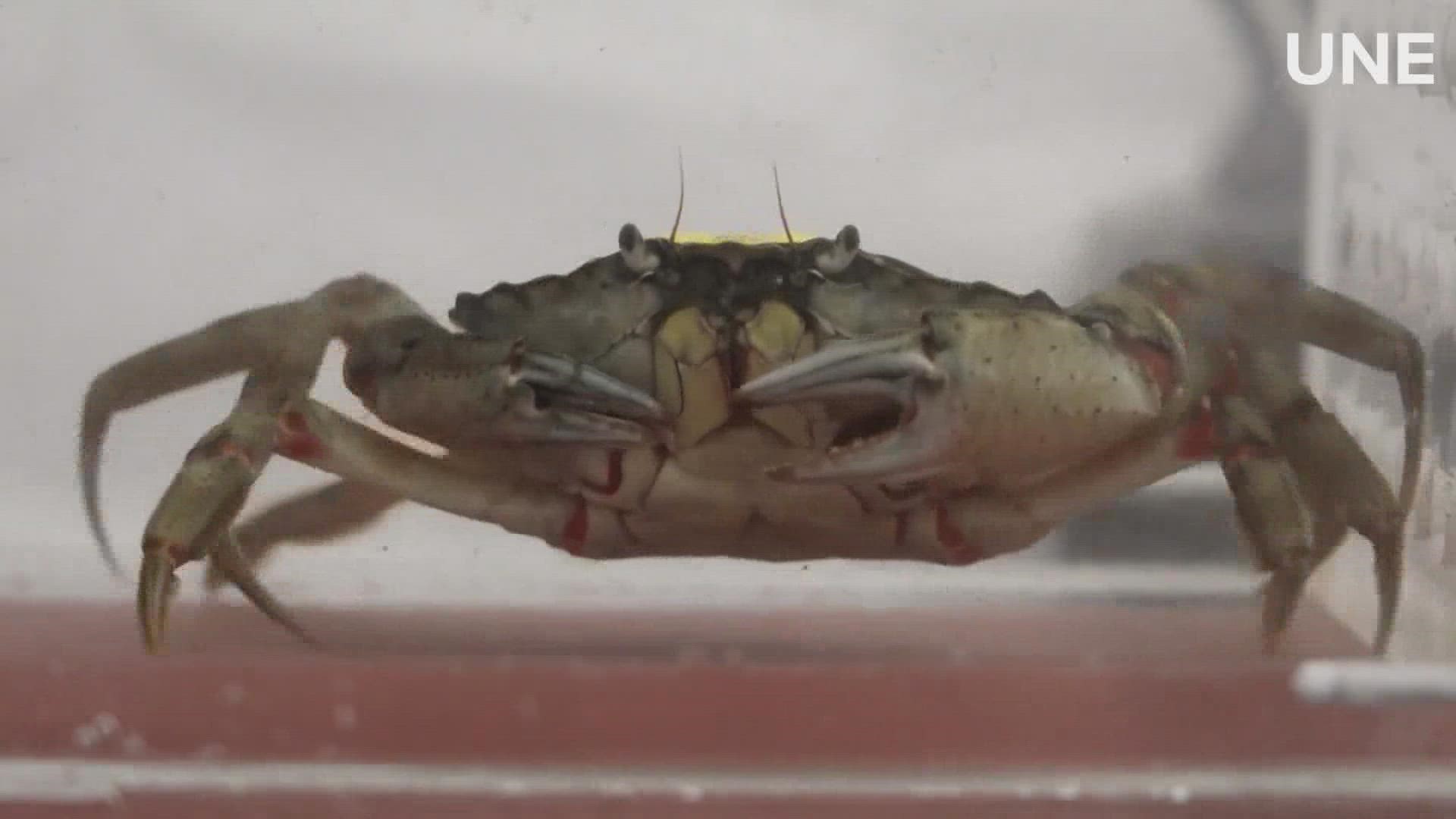SCARBOROUGH, Maine — It's a sultry summer day, and you decide to head down to Maine's beaches to escape the heat.
While wandering around, you see something scurry quickly under a rock. You flip it over to find one of the most widespread invasive species in the world: the green crab.
Green crabs are resilient critters that are able to adapt to many different environments.
Sometimes, this means adapting to a new environment after being displaced from their original home. That happened more than 200 years ago, when they made their way from Europe to America in the ballast tanks of ships. They quickly spread north, reaching Down East Maine as early as the 1950s, according to this article from the Maine Department of Marine Resources.
Other times, it means adapting to changes in a place where they have been living for a while. In this case, the warming Gulf of Maine.
Maine's changing climate plays a pivotal role in the lives of many sea creatures and green crabs are thriving in it.
Markus Frederich is a marine biologist at UNE who studies the impacts of crabs on Maine's coastal ecosystems.
Frederich's research has brought on some very interesting results, including documenting just how little the green crabs are affected by rapidly warming waters.
"It seems to be that green crabs will be among the winners in climate change, because they can easily tolerate that,” Frederich said.
Some native species are not as tolerant. This also increases competition for resources in the ecosystem, so less tolerant species may not thrive as well as they previously had.
“The ecosystem of the future will be dominated by some of those invasive species, like the green crab,” Frederich continued.
As green crabs become more abundant, they put one of Maine’s fisheries at particular risk: soft-shell clams.
Nathan Orff is a member of the Scarborough Shellfish Conservation Commission and has seen how green crabs are impacting clams firsthand.
“It’s a really big problem. … There’s a lot of crabs. There’s a lot of crabs,” Orff said.
Green crab populations do fluctuate, but they recently have been rising quite a bit. This is quite concerning for anyone involved in the shellfish industry.
“Green crabs are a main predator of shellfish and other marine organisms around here,” Orff said.
Green crabs will eat any small clams, Orff said, but mature soft-shell clams usually have enough protection to stay safe from a crab's claws.
The issue, though, is that young soft-shelled clams, which already have a low survival rate, are a popular meal for the green crabs.
When you add increased predation to a species that does not tolerate the warming water well, the risk is twofold. This has possible impacts on the future for anyone who may be looking to this industry as a way to make a living.
Currently, clamming is a $67.5 million industry in Maine according to the University of Maine. It often ranks second or third in Maine's seafood industries, with lobsters taking the No. 1 slot.
The same article linked above shows that more than half of all soft-shell clams in the United States come from Maine's shores.
This industry faces multiple threats for sustainability.
“There’s a couple of towns that barely have a shellfish program anymore. And whether that’s from coastal erosion or juvenile predation or water quality issues, these are all connected to people's ability to make a career out here,” Orff said.
Sustainability movements are underway, but native clams are suffering as Maine’s water continues to warm.
Orff explained that members on the Scarborough Shellfish Conservation Commission have to do a certain amount of community service each year.
This includes typical things like cleaning up trash but also includes trapping green crabs to help keep the population in check.
Green crabs and their impacts on our ecosystem are here to stay. The next big piece to the puzzle is figuring out exactly how to live with them and protect Maine's seafood industry at the same time.

